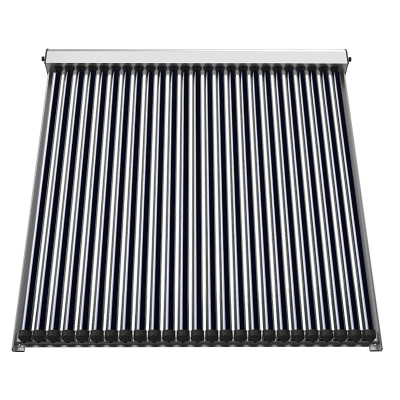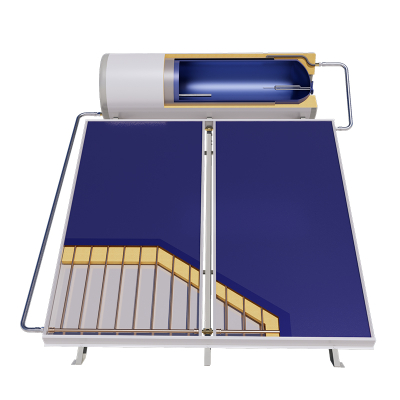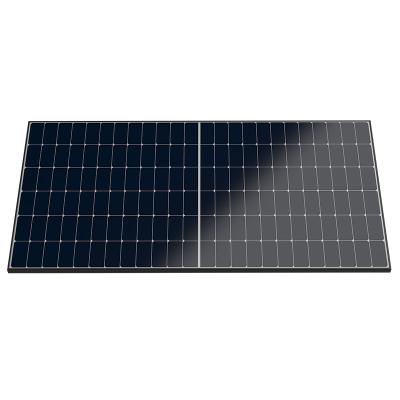Solar Thermal Energy: A Green Revolution in Clean Thermal Power
Amid the global wave of low-carbon energy transition, solar energy—an inexhaustible renewable resource—has become a core driver of the energy revolution. Among its applications, solar thermal technology, with unique advantages of "direct thermal energy conversion, strong energy storage, and wide application scenarios," has gradually grown from a "potential player" to a "key force" in the energy sector, offering a practical solution to address energy shortages and environmental pollution.
The core principle of solar thermal energy is to convert solar radiation directly into thermal energy via specific devices, unlike photovoltaic (PV) technology which first converts it into electricity. The process relies on the coordinated operation of three key links: "heat collection, heat transfer, and heat storage." As the core component, the heat collector captures sunlight using technologies like absorption coatings and concentrating mirrors, converting light energy into thermal energy and transferring it to a heat transfer medium (such as water or heat-conducting oil). The medium then transports the heat to a storage device via pipelines or directly supplies it to end-users. The heat storage system, using phase-change materials or insulated water tanks, enables long-term heat storage, ensuring stable energy supply even at night or on cloudy days. Compared with PV technology, solar thermal energy has a distinct advantage: "direct utilization of thermal energy"—it avoids energy loss from electricity conversion, achieving a thermal efficiency of 50%-80%, making it particularly suitable for scenarios requiring continuous and stable thermal supply.
In terms of technological development, solar thermal energy has formed a multi-dimensional technical system to meet energy needs of different scales. For small-to-medium applications, flat-plate collectors and vacuum tube collectors are mainstream. Flat-plate collectors, with simple structures and low costs, are widely used for residential hot water supply. For instance, in rural areas of northern China, "solar water heaters"—installed on rooftops—meet daily needs like washing and heating. Vacuum tube collectors, thanks to their insulated vacuum layer, perform better in low temperatures (operating normally even at -20°C), making them the top choice for high-latitude regions. In large-scale energy projects, concentrated solar thermal (CSP) technology shows great potential: it uses numerous heliostats to focus sunlight on a central receiver, generating high-temperature thermal energy (over 400°C) that can not only drive steam turbines for power generation but also support industrial steam production and seawater desalination. Spain’s PS10 solar thermal power plant, for example, uses 1,250 heliostats and a central tower receiver to achieve 24/7 continuous power generation, with an annual output of 23 million kWh, setting a model for the commercial operation of large-scale solar thermal projects.
In expanding application scenarios, solar thermal energy is moving beyond "single hot water supply" to "multi-field integrated utilization," becoming a key link connecting people’s livelihood needs and industrial production. In the civil sector, besides household water heaters, solar thermal heating systems have been widely promoted in northern Chinese cities. In Beijing, for instance, over 5 million square meters of new solar thermal heating areas were added in 2024. Using a combined model of "heat collectors + heat storage tanks + auxiliary heat pumps," winter heating energy consumption was reduced by over 60% compared to traditional gas-fired boilers, while carbon emissions decreased by approximately 300,000 tons. In industry, solar thermal energy offers a new approach for high-energy-consuming sectors to "reduce carbon." Industries like textiles and food processing require large amounts of industrial heat (100-200°C); installing medium-temperature heat collectors can directly replace coal-fired or gas-fired boilers, cutting enterprise energy costs and pollutant emissions. Additionally, in agriculture, solar thermal energy is used for greenhouse heating and agricultural product drying. A cherry-growing base in Shandong Province adopted solar thermal drying equipment, shortening the cherry drying cycle from 7 days (traditional method) to 3 days, avoiding quality loss from coal-fired drying, and increasing product premium rates by 20%.
The environmental value of solar thermal energy lies not only in its "zero-carbon emission" attribute but also in its substitution effect on traditional energy systems. Data from the International Energy Agency (IEA) shows that thermal energy consumption in global buildings and industry accounts for over 50% of total energy use, mostly relying on fossil fuels like coal and natural gas. If the application ratio of solar thermal energy is increased to 20%, global carbon emissions could be reduced by approximately 3 billion tons annually—equivalent to the carbon sequestration effect of planting 16 billion trees. Under China’s "dual carbon" goals (carbon peaking by 2030 and carbon neutrality by 2060), solar thermal energy has been included in energy development plans. The 14th Five-Year Plan for Renewable Energy Development clearly states that by 2025, solar thermal power installed capacity will reach 5 million kilowatts, and the area of solar thermal heating and industrial heat supply will exceed 1 billion square meters—providing strong impetus for the industrialization of solar thermal technology.
Of course, solar thermal energy still faces challenges: high initial investment for large-scale projects, room for improvement in heat storage material performance, and limited solar resource endowment in some regions. However, with technological iteration and policy support, these issues are gradually being resolved. New nano-coating collectors have increased thermal efficiency to over 85%, molten salt heat storage technology enables ultra-long-term heat storage, and hybrid "solar thermal + PV" energy systems complement the advantages of both technologies to further enhance energy supply stability.
From household rooftop water heaters to large-scale solar thermal power plants in deserts, solar thermal energy is reshaping humanity’s energy utilization patterns in a "visible and usable" way. It is not just a clean energy technology but also a vital force for green development. In the future, with continuous technological breakthroughs and expanding application scenarios, solar thermal energy will undoubtedly play a more important role in the global energy transition, providing solid thermal support for building a "zero-carbon Earth."





